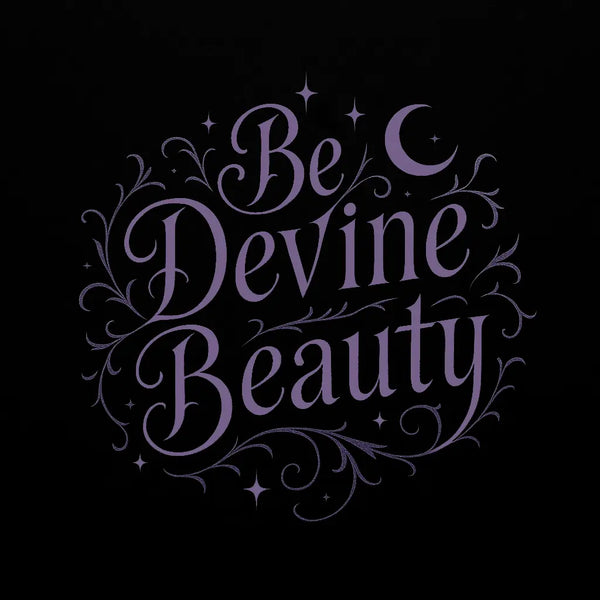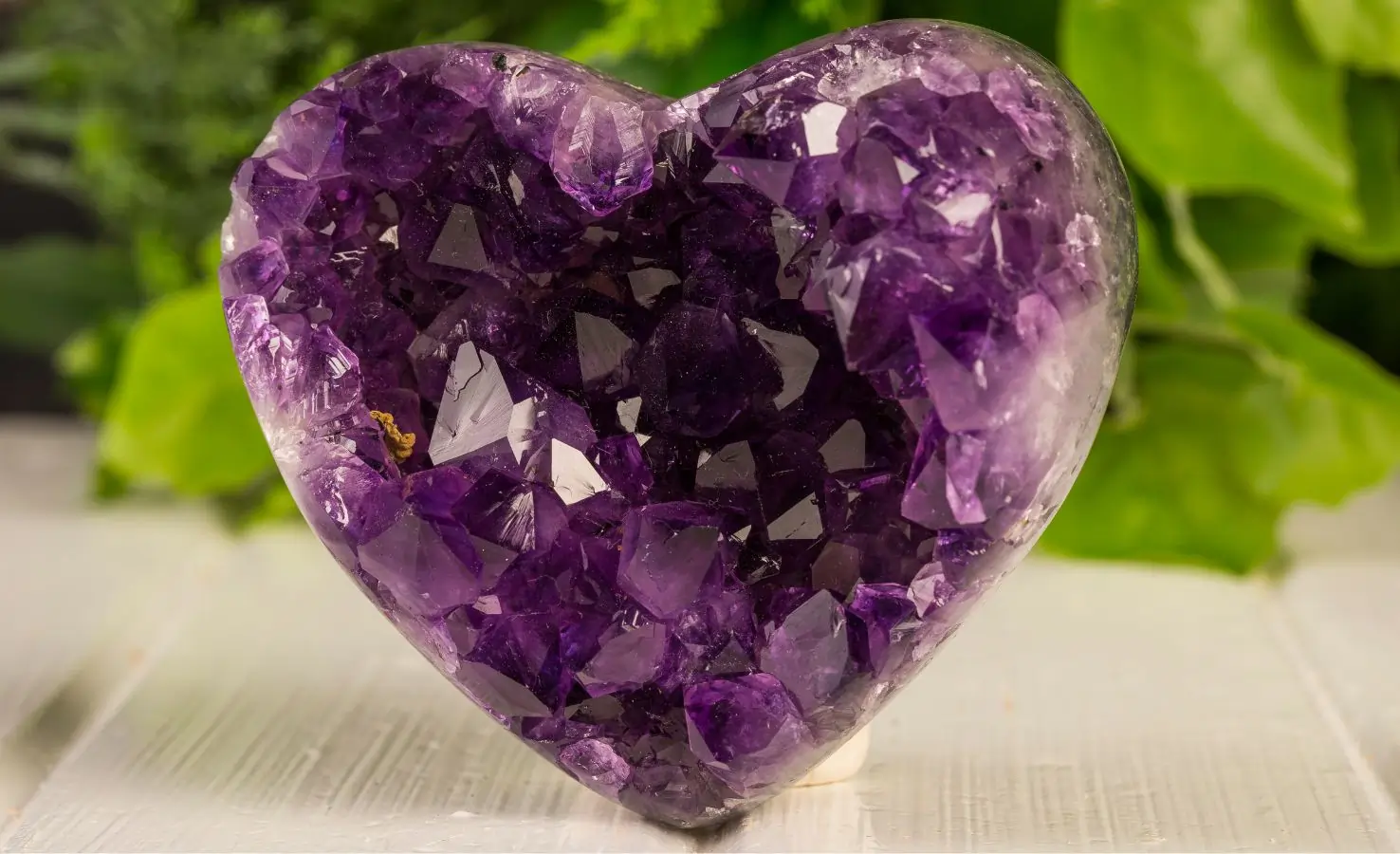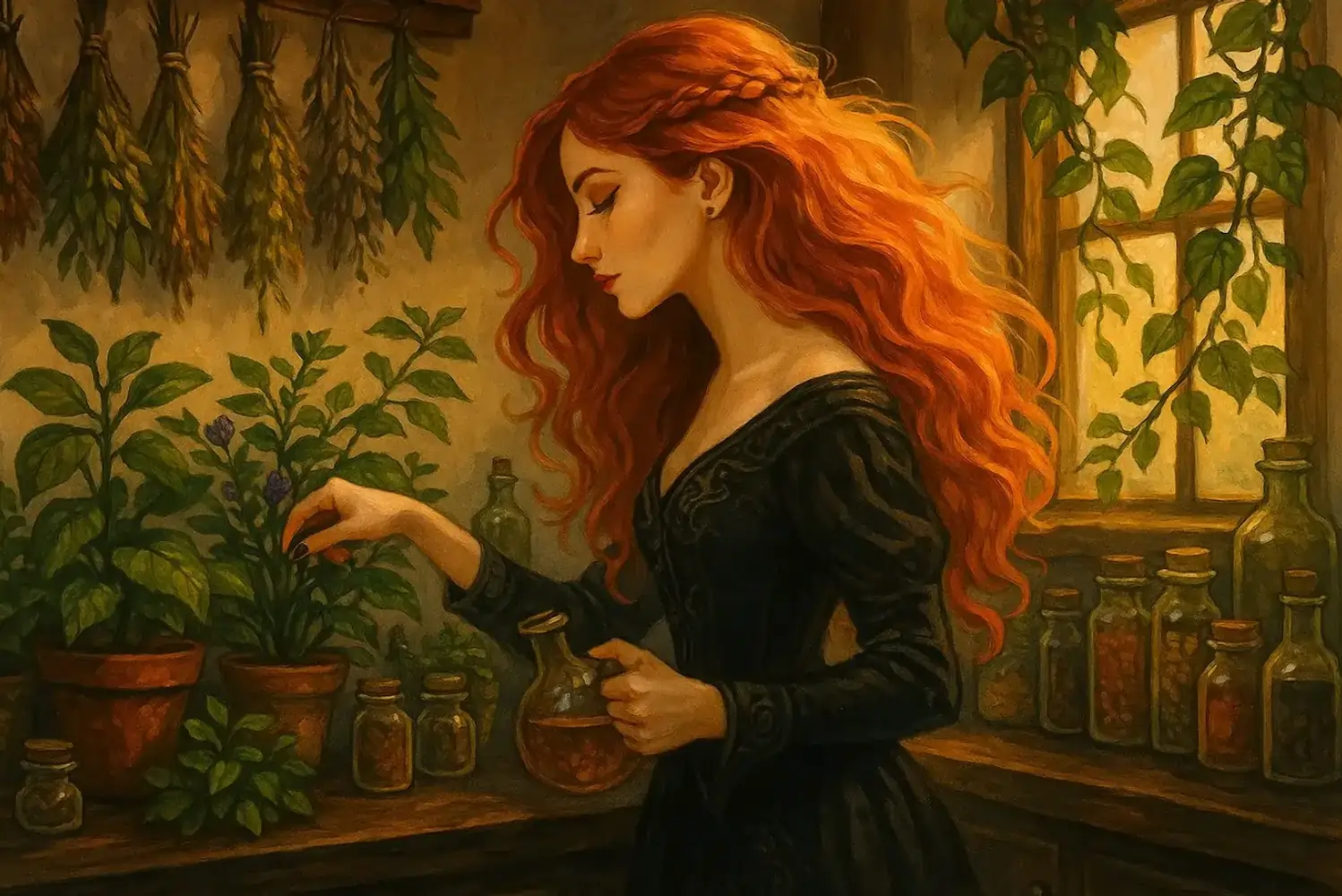
Taboo though it may be, the practice of sex magic has deep roots, permeating through thousands of years of humanity. Rituals related to sex likely go much farther back than recorded history because the act of pleasure is instinctual, natural, healthy, and sustains the replenishing of life on our planet.
Acts of abstinence and denial for the sole purpose of purity and Heaven's pearly gates are products of a recent age, where Patriarchy and Catholicism began to reign during late antiquity, especially after Christianity gained state power in the 4th century AD. Religion was weaponized for wealth and power, demolishing cultural and religious diversity wherever it could.
Knowledge survived. Not only knowledge, but the internal pull toward something different, something that rang truer to yourself than the religions being peddled to you. For those who prioritize joy, personal fulfillment, deep romantic connection, and seek to learn more, I hope you enjoy this complete timeline of the history of sex magic.
Jump To
Ancient Egypt (4th Millennium BCE)
From the earliest known records of ritualistic sex, a deep connection to the Divine was at the core of the practice.
The Culture Surrounding Sex
The core tenets of the Ancient Egyptian religion were Death, Transformation, and Rebirth. In these days, an Egyptian would've spent a heavy amount of time thinking about and preparing for death. Though grim, it was death that gave life purpose: a statement that rings true to today.
However, you cannot have death without life, and you cannot create life without sex. Sex was viewed as an inherently spiritual act and was not looked upon with shame. Premarital sex and children born out of wedlock carried no stigma, unlike the Puritanical views of today.[1]


Sexuality was more fluid than one might expect, with surviving sculptures and pictorial carvings of gay and lesbian couples. Though not entirely equal, women did have more equality than one might expect for these ancient days, including the right to divorce at will, without sacrificing one's reputation and possessions.
Heka
Magic, or heka, was seen as a force of nature that, when utilized correctly, could influence desired outcomes. Priests were the leading practitioners, skilled in acts of healing, protecting, and more. Midwives and nurses, though far below the status of priests, also intertwined heka into their fertility and birthing rituals.
Embedded symbolically into amulets were the protectors Bes, the God of music, dance, and sexual pleasure, and Tamulet, the Goddess of fertility and childbirth. Ancient Egyptians wore these amulets as living spells of both virility and fortification.[2][3]

One of the most sexually raucous rituals of Ancient Egypt came about in 1470 BCE at the "Festival of Drunkenness," where men and women celebrated the warrior Goddess Sehkmet with binge drinking, frenzied dancing, and, of course, massive orgies. Anyone else care to travel back in time?[4]
Ancient Greece & Rome (323-31 BCE)
A dark time in the history of erotic magic, as the rituals were meant to harm and destroy, not heal and create.

Few Ancient timelines would be as forgiving to women as Egypt. In the Hellenistic period, spanning from the death of Alexander the Great to the Roman Conquest of Egypt (how ironic), what was known as love magic, or Philia, took a sinister and controlling turn.
Both men and women could harness Philia, and each gender has its own terminology.
- Eros - When men practiced
- Agoge - When women or other "social inferiors" practiced
Women were passive in their love work, mainly to gain another's affection rather than sexual dominance. Spells conjured by men are more acutely described as curses, cast toward a woman to capture her mind and body so that she craves none but him.
Desired outcomes could consist of "driving them mad with pain or depriving them of basic functions such as sleep, in order to push them into the arms of the curser or away from the curser’s lover."[5]

Curse dolls were common channels; pins would be stabbed through the doll in strategic places such as the brain, eyes, mouth, vulva, anus, and more, all while chanting how the subject shall think of no one but the curser, speak of nothing but the curser, or bed no one but the curser, or else suffer severe sickness and malady.[6]
Sadly, these ideologies would persist throughout the Medieval period, though often filtered through Christian demonology and esoteric reinterpretation. While some pagan fertility rites and beneficial sex magic practices survived into the Early Middle Ages, much knowledge was suppressed or lost under the weight of Christian dominance in the centuries that followed.
These actions are domineering and violent, stemming from a period where male supremacy was exalted, and are more than welcome to stay in the past. Let's move on to the next, where sex magic, as we know it, begins to take root.
Taoism (206 BCE)
Taoism and Tantra are often discussed together, but the truth is that Taoism is much older, with roots tracing back to prehistoric China.
Attributed to writing the original text of Taoism, also known as Daoism, is the potentially mythical philosopher Laozi. Daodejing, or Tao Te Ching, is dated between the 8th and 3rd century BCE.[7] This text significantly influenced Chinese philosophy, religion, and culture, as well as Western thought and literature.

Foundational Ideology
Tao is defined as "the way," and represents the "flow of all natural processes and the innate balance of the world."[8] Tao Te Ching describes the balance of yin and yang, where everything has an equal opposite.
Chi is "life force energy," and Taoists saw this energy in everything—the air, the sea, the flowers, the self, and all else. Eating healthy was paramount in keeping a steady flow of life force energy throughout the body, seeing themselves united with nature, not separate.
“Because clarity and enlightenment are within your own nature, they are regained without moving an inch.”
Spiritual Superiority
The Divine Feminine permeates throughout Taoism, with the belief that feminine softness overcomes masculine hardness, along with women having a stronger connection to nature, both due to creating new life and an innate sense of empathy and understanding that women tend to imbue more of than men.

Women were said to reach enlightenment far more easily than men. In the Tang Dynasty, they "transmitted the teachings of herbs, magic, sex, healing and esoteric practices,"[9] respected as the ones holding the higher secrets of the Tao.
Sexual Practices
It wasn't until the Han Dynasty (202 BCE-220 AD) that Taoists began ritualizing sex in their spiritual practice. The rites are called héqì, which is Chinese for "joining energy."[10]
“Sex essence is the source of all energy available for creative and thinking processes.”
Sex was viewed as a unification of the differing parts of nature, where Yin and Yang became one, exchanging energies and essences. Intercourse would last long periods, focusing on physical movements following the breath, rather than the other way around.
A common practice for men was Huanjing bunao, which directly translates to 'returning the semen/essence to replenish the brain.' Extended arousal without ejaculation was encouraged for longer nights of passion and the overall health of the man: they believed that retaining semen retained Chi by causing the 'essence of life' to flow back into their bodies, up the spine, and into the brain.[11]

Women, on the other hand, could orgasm as many times as they wanted without losing any life force energy. Female orgasms were sanctified; a way for their partners to absorb Yin energy, consequently causing men to focus more on their lover's pleasure, rather than their own.[12]
Taoism is an incredibly progressive religion, focusing on nature, balance, mindfulness, and harmony. No wonder it has survived so many millennia.
Tantra (500 AD)
India is the birthplace of Tantra, and within 200 years of the philosophy's beginning, the practice had spread across the whole of the country.
The Philosophy's Tenets
The science and study of energy is at the core of Tantra; energy of the world, energy of the self, and the practice can be entirely individualized to suit your energy. All existence is seen as completely interconnected, and the spiritual path of Tantra emphasizes the evolution of the human soul and consciousness.
“Let the snake inside you dance to the tune of the universe.”
Contrary to most religions, Tantra celebrates the material aspects of life. Tantric yogis believed that "human suffering arises from the mistaken perception of separation between the earthly world and the spiritual world." Therefore, all that is physical and emotional is equally as divine as the spiritual plane, and by celebrating everything that encompasses life, one can find enlightenment.[14]
Indian Cultural Background
Hindu cosmology often portrays creation as the result of divine union, leading some traditions to revere sex as a sacred expression of cosmic energy. With these cultural ideals as a foundation, combined with embracing all that is material, tantric ideals of sex both expanded upon and diverged from Hindu beliefs.
Instead of viewing sex as a means to an end, it became a transformative act, and practitioners would "harness the body and sensuality in order to unite with divinity," even if certain acts were viewed as taboo.[15]

Actions such as a man performing oral sex on a woman, engaging in infidelity, or fornicating with a low-caste person violated conventional Hinduism, leading to the infamous reputation of Tantrists during that period.
It is important to note that the more transgressive actions were executed by small cults, such as the Shaktas and Vaishnava-Sahajiyas, and do not represent the whole of Tantra.[16] In fact, many Tantrists did not partake in ritualistic sex at all.
Tantric Sex
Within Tantra, the Divine Feminine, or Shakti, was celebrated as a creative, healing force, kind and loving, but also free-spirited, chaotic, and without limits. She is the Mother Goddess, who takes many forms: those which protect the good, Durga, and those which destroy, Kali.
Necessary to balance Shakti is the Divine Masculine, or Shiva, characterized by strength and protection, but also wrath and destruction.[17][18] When engaged in sexual union, created is "divine self-realization and heighten[ed] consciousness, emerging into the essence of Tantra."[19]

Tantra is a spiritual path that "uses the body, breath, sound, and movement as tools to purify and transform the mind," increasing mindfulness, compassion, and deep connection with ourselves and others.
In practice, bring your awareness to the body, stay present with the breath, and start building a deeper connection to sensation. When approached with intention, tantric sex can support the release of stored trauma, deepen intimacy, and soothe the nervous system. It becomes a sacred practice that nurtures pleasure and energetic, emotional well-being.[20]
Kabbalah (12th-13th Century AD)
Elusive, secretive, mystical, and deeply entrenched in biblical study.

Mystical Judaism
Kabbalah can be translated as "occult knowledge," "mysticism," or "received," and is a sect of Judaism that works with the essence of God.[21] The writings within the Zohar, a collection of commentary on the Torah, are generally considered to be the basis of Kabbalah, intended "to guide Kabbalists in their spiritual journey, helping them attain the connectedness with God that they desire."
Practitioners crave deep intimacy with God, and instead of viewing Him and His creation as differing entities, Kabbalists see their deity as more of a continuum, where each soul contains a piece of the divine.
“Know yourself, and you will know the mysteries of the divine.”
There are three pathways through which Jewish mystical knowledge is known to be gathered:
- Discovering nistar, or hidden meaning, within sacred texts
- Learning directly from the mouth of a Kabbalistic master
- Through personal revelation, which may occur due to divine intervention or other suprarational phenomena
Magic becomes intertwined as rituals were created to influence change on the physical and spiritual planes. Kabbalists aimed to experience God and, in doing so, become an extension of Him through these rituals, manifesting divine intentions such as "advancing good, subduing evil, healing, and mending."[22]
Kabbalistic Sex Magic Rituals
As the purpose of Kabbalah was to be close to God, the scripture of creation in Genesis was viewed as the blueprint. The Zohar interpretation depicted an androgynous deity that first created male and female together, as one, which then becomes plural.
By imitating the act of creation through two main rituals: those of domestic sacred sexuality and those of exile, or Gerushin, "walking meditation rituals...performed while wandering through the countryside," their purpose was to temporarily mend the divine separation of the genders and end human exile.

Through sexual union, Kabbalists could experience divinity, and, by extension, become part of the divine creative process through reproduction, "sustain[ing] the created world" and gaining power over it."[23]
Late 19th-20th Century Westernization
Here we focus on two of the most influential occult figures of the time, Paschal Beverly Randolph and Aleister Crowley.
Paschal Beverly Randolph (1825-1875)
Spiritualist Paschal Beverly Randolph is credited with first bringing the practice of sex magic into the Western world. After traveling through Asia and Europe, studying with the likes of Elphias Levi and other mystics, he brought his findings back to America.

His system emphasized orgasm as the most intensive and powerful experience a human can have, as that is when the "soul suddenly opens to the divine realm and the breath of God is infused." The most effective way for magic to work and prayers to be answered was through simultaneous orgasm.[24]
Beyond sex magic, Randolph gave speeches on "occult esoterica, trance mediumship, clairvoyance...medical potions, abolition of slavery, women’s rights, and the importance of literacy." As a Black-American man, he claimed that if he were white, his teachings would have been taken more seriously, and yet, his studies and lectures gave rise to many new occultist religions and sects with devout followers.[25]
“Sex is a thing of soul.”
Randolph personally established Fraternitas Rosae Crucis, the earliest known Rosicrucian order in the U.S., who define themselves as "a community of philosophers who study Natural Laws in order to live in harmony with them."[26] His beliefs would go on to heavily influence Carl Kellner and Theodore Reuss, who founded the Ordo Templi Orientis.[27]
Aleister Crowley (1875-1947)
The infamous Aleister Crowley became a Christian skeptic early in his youth due to a series of unfortunate events regarding the sickness and death of many close friends and family. He inherited a large fortune, traveled the world, and sought out alternative answers to his spiritual skepticism.[28]
Crowley was initially introduced to the occult by a Swiss chemist, which led to his 1898 initiation into the Hermetic Order of the Golden Dawn. He would go on to found the religion Thelema in 1904, with the central tenet of, "Do what thou wilt shall be the whole of the Law."[29]

He was inducted into the Ordo Templi Orientis in the early 1910s, and fascinated by the cult's emphasis on sex magic (or sex magick), he quickly expanded their teachings within a few years. The self-proclaimed "Beast 666" wrote extensively on the subject, often heavily veiled in symbolism.[24]
Eroto-comatose lucidity is the sex magic technique Crowley is most known for, where non-orgasmic repeated sexual stimulation places "the individual in a state between full sleep and full wakefulness as well as exhaustion, allowing the practitioner to commune with their god."[30]

Aleister Crowley was controversial for many reasons. In a time of heightened purity, he embraced his bisexuality, taught sodomy, encouraged the use of sex toys, indulged in drugs (from hashish to heroin), and experimented with sex magic using masturbation and female prostitutes. After his death, he became a cultural figure, influencing occultists for decades to come.[29]
Sex Magic in The Modern Age
Right now, in a time of globalization and access to information like never before, sex magic can be a 'pick your poison' type of scenario. You can integrate Ancient deities, practice solo, or align with multiple paths—whatever speaks to you most.
My personal belief is that no path is perfectly correct. Cultural influence permeates each tradition, so naturally, one's path needs to be entirely individual for utmost spiritual connection. I suppose that does align quite nicely with Tantra.
What is important to note are the common themes throughout millennia of history, religion, and practice, which are the ideals of a universal energy connecting the physical with the spiritual, harnessing the unification and transformation of sex to reach enlightenment and influence the outcome of future events.
That instinctual feeling we have deep down, telling us that there must be more to this life than what we see, begs to be followed. I implore you to indulge, explore, learn, and experiment. You'll be surprised at all you discover.
~ With love, Beatrix Devine
Last Updated on October 15th, 2025
Sources
[1] - The Sex Lives of Ancient Egyptians - The Not So Innocent's Abroad
[2] - Ancient Egyptian Magic - BBC History
[3] - Tarewet, An Untraditional Egyptian Goddess - Inquiries Journal
[4] - A Closer Look at Ancient Egyptian Orgies - Swing Lifestyle
[5] - Erotic Magic and its Socio-Cultural Context - Antiquity Reconsidered
[6] - Magic and Erotic Obsession in the Ancient World - Substack
[7] - History of Taoism - Wikipedia
[8] - Taoist Sex Practices: The East Got It Right - Strand Magazine
[9] - Taoist Sexuality and The Feminine - Herstory
[10] - Taoist Sexual Practices - Wikipedia
[11] - Huanjing bunao - Wikipedia
[12] - Taoist Bedroom Secrets - Root and Bones
[13] - Tantra Enlightenment Revolution - British Museum
[14] - Tantra: A Comprehensive Guide for Beginners - Somonanda
[15] - Demystifying Tantric Sex - British Museum
[16] - Tantric Ritual and Magical Practices - Britannica
[17] - The Importance of the Divine Feminine in Tantra - Elephant Journal
[18] - The Divine Masculine: Understanding Lord Shiva - Amber Guha
[19] - The Eastern and Western Perspectives on the Mystics of Tantric Sex - Mysticlei
[20] - Tantra and Tantric Sex Practices 101 - Tugce Balik
[21] - What Is Kabbalah? - Chabad
[22] - What Is Kabbalah? - Reform Judaism
[23] - Kabbalah, Sex Magic, and the Trans-Utopia - Marla Segol
[24] - Sex Magic - Wikipedia
[25] - Paschal Beverly Randolph - Black Past
[26] - Rosicrucian Definition - Rosicrucian
[27] - The Man Who Introduced Sex Magic to North America - Blustil
[28] - Aleister Crowley - Britannica
[29] - Aleister Crowley - The Occult Encyclopedia
[30] - Eroto-comatose lucidity - Wikipedia
[1] - Taoist Tantra - Featured Image
[2] - Lesbian Egyptian Statue - The Not So Innocents Abroad
[3] - Homosexual Pictorial Carving, Ancient Egypt - The Not So Innocents Abroad
[4] - Ancient Egyptian God of Sex, Bes - Ubuy
[5] - Greco-Roman Voodoo Doll - Substack
[6] - Laozi - Britannica
[7] - Wei Huacun - iMedia
[8] - Ancient Depiction of Taoist Sex - Facts and Details
[10] - Indian Illustration of Couple Having Sex - British Museum
[11] - Alliance of Shiva and Shakti - Yoga Alliance International
[12] - Colorful Illustration of Kabbalah - Learn Kabbalah
[13] - Androgynous Diety - Learn Religions
[14] - Paschal Beverly Randolph - Chrissy Senecal
[15] - Aleister Crowley - Otago
[16] - Old Aleister Crowley - When Churchyard's Yawn









